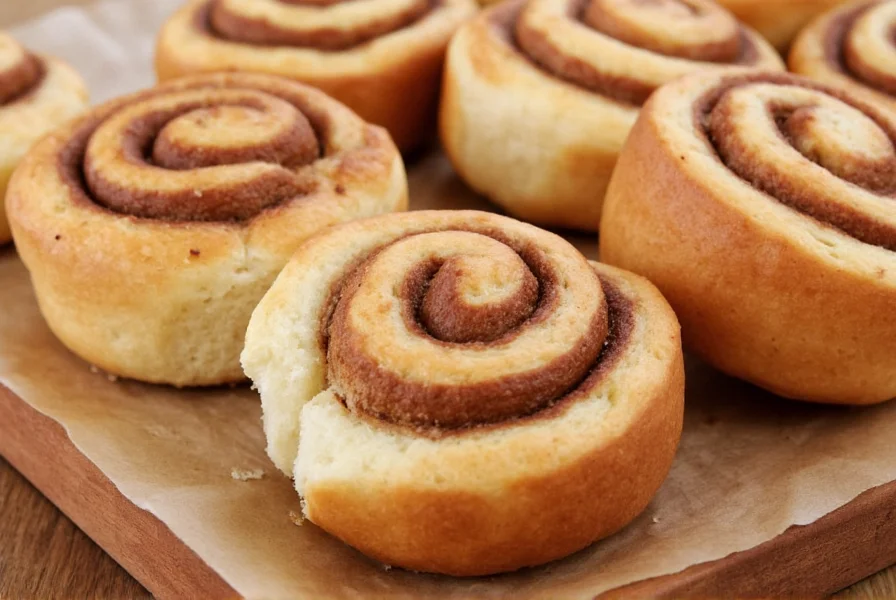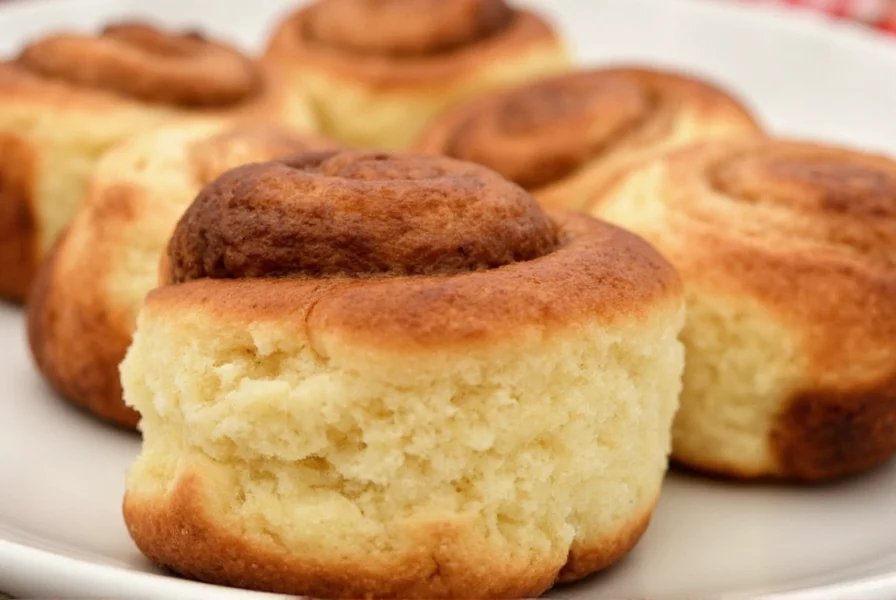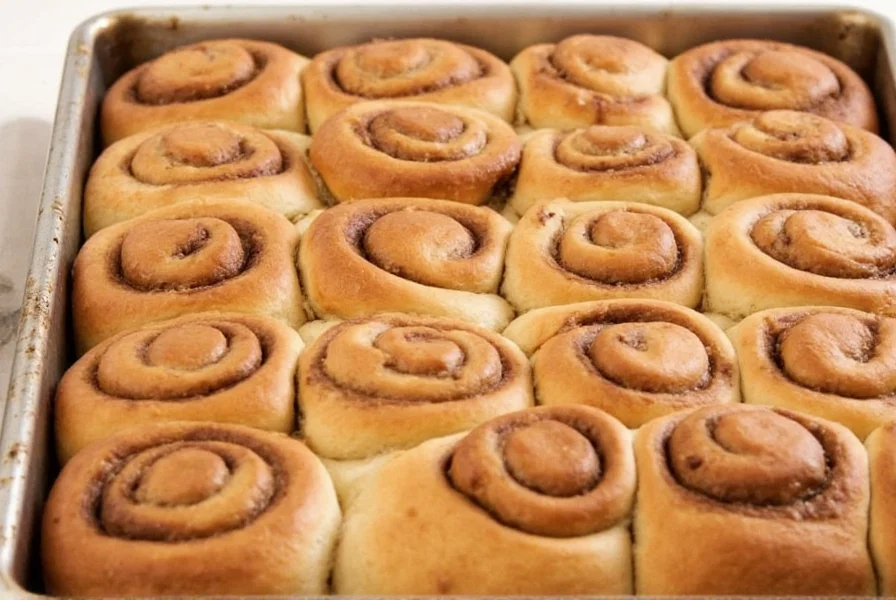These beloved pastries have become a staple in American breakfast culture, but their roots trace back to Pennsylvania Dutch and Amish baking traditions. Unlike standard cinnamon rolls, authentic Amish versions often feature a more substantial dough with higher butter and egg content, creating an exceptionally soft, pillowy texture that melts in your mouth.
The History Behind Amish Cinnamon Rolls
The origins of Amish cinnamon rolls connect to German and Swiss baking traditions brought to Pennsylvania by Anabaptist immigrants in the 17th and 18th centuries. While cinnamon itself wasn't native to Europe, it became a prized spice through trade routes, eventually finding its way into Amish kitchens.
Traditional Amish baking emphasizes simplicity, quality ingredients, and community sharing. The "Amish friendship bread" concept—where a sourdough starter is passed from person to person—influenced how these cinnamon rolls were historically prepared. Bakers would maintain a live starter culture, feeding it regularly and sharing portions with neighbors, creating a community connection through food.
What Makes Amish Cinnamon Rolls Different
Understanding the distinction between regular cinnamon rolls and authentic Amish cinnamon rolls recipe variations is essential for baking success. Key differences include:
| Feature | Standard Cinnamon Rolls | Authentic Amish Cinnamon Rolls |
|---|---|---|
| Dough Composition | Basic enriched dough | Richer dough with more butter and eggs |
| Preparation Method | Typically uses commercial yeast | Traditionally used sourdough starter |
| Filling Ratio | Moderate cinnamon-sugar mixture | Generous filling with brown sugar option |
| Texture | Firmer structure | Softer, more tender crumb |
These differences contribute to the distinctive melt-in-your-mouth quality that makes traditional Amish cinnamon buns so special. When searching for the best yeast for Amish cinnamon rolls, many bakers prefer active dry yeast for its reliability, though instant yeast works well too with slightly reduced activation time.
Classic Amish Cinnamon Rolls Recipe
Creating authentic Amish cinnamon rolls requires attention to detail and quality ingredients. This tested recipe yields 12 perfect rolls with that characteristic Amish softness.

Ingredients
- 1 cup whole milk, warmed to 110°F (43°C)
- 2 1/4 teaspoons active dry yeast (one packet)
- 1/4 cup granulated sugar
- 1/2 cup unsalted butter, melted and cooled slightly
- 2 large eggs, room temperature
- 4-4 1/2 cups all-purpose flour
- 1 teaspoon salt
Filling
- 1 cup packed brown sugar
- 3 tablespoons ground cinnamon
- 1/2 cup unsalted butter, softened
Cream Cheese Glaze
- 4 ounces cream cheese, softened
- 1/4 cup unsalted butter, softened
- 1 cup powdered sugar
- 1/2 teaspoon vanilla extract
- 1-2 tablespoons milk
Step-by-Step Instructions
- Activate the yeast: In a large bowl, combine warm milk, yeast, and 1 tablespoon of the sugar. Let sit for 5-10 minutes until foamy.
- Prepare dough: Add remaining sugar, melted butter, eggs, 2 cups flour, and salt to yeast mixture. Mix until combined.
- Knead: Gradually add remaining flour, 1/2 cup at a time, until dough pulls away from sides of bowl. Knead for 5-7 minutes until smooth and elastic.
- First rise: Place dough in greased bowl, cover with damp cloth, and let rise in warm place for 1-1.5 hours or until doubled.
- Prepare filling: Mix brown sugar and cinnamon. Set aside softened butter.
- Roll out: Punch down risen dough and roll into 16x20 inch rectangle on floured surface.
- Assemble: Spread softened butter over dough, then sprinkle cinnamon-sugar mixture evenly. Roll tightly from long side.
- Cut: Using dental floss or sharp knife, cut into 12 equal rolls. Place in greased 9x13 inch baking dish.
- Second rise: Cover and let rise 30-45 minutes until puffy.
- Bake: Preheat oven to 350°F (175°C). Bake 20-25 minutes until golden brown.
- Glaze: While rolls bake, beat glaze ingredients until smooth. Pour over warm rolls.
Professional Baking Tips for Perfect Results
Even experienced bakers encounter challenges with cinnamon rolls. These tips ensure success with your Amish cinnamon rolls from scratch:
- Dough temperature matters: Keep ingredients at room temperature for optimal yeast activation. Cold ingredients slow fermentation.
- Avoid over-flouring: Excess flour creates tough rolls. Add flour gradually until dough is tacky but not sticky.
- Cutting technique: Use unflavored dental floss to slice rolls cleanly without squishing the dough.
- Rising environment: For consistent rising, place dough in oven with light on (no heat) or near a warm appliance.
- Fresh spices: Use recently purchased cinnamon for the most vibrant flavor in your Amish cinnamon buns.
Common Mistakes to Avoid
Many home bakers make these errors when attempting traditional Amish cinnamon rolls recipe variations:
- Yeast killed by hot liquid: Milk exceeding 120°F (49°C) will kill yeast. Use a thermometer for accuracy.
- Under-proofed dough: Rushing the rising process results in dense rolls. Properly risen dough should spring back slowly when gently pressed.
- Overbaking: Amish cinnamon rolls continue cooking slightly after removal from oven. Remove when just golden, not deeply browned.
- Glazing too early: Applying glaze to extremely hot rolls causes it to melt through rather than coating properly.
Variations and Substitutions
While traditional Amish cinnamon rolls follow a specific formula, these thoughtful variations maintain authenticity while accommodating different needs:
- Dairy-free option: Substitute plant-based milk and butter alternatives for those with dietary restrictions.
- Whole wheat version: Replace up to 1 cup of all-purpose flour with whole wheat flour for added nutrition without compromising texture.
- Spice variations: Add cardamom or nutmeg to the filling for complex flavor profiles while keeping the authentic Amish cinnamon rolls essence.
- Gluten-free adaptation: Use a quality gluten-free flour blend with xanthan gum for acceptable results, though texture will differ slightly.
Storing and Reheating Instructions
Proper storage maintains the distinctive texture of authentic Amish cinnamon rolls:
- Room temperature: Store in airtight container for up to 2 days. Place parchment between layers to prevent sticking.
- Refrigeration: Keep for up to 5 days. Reheat individual rolls in microwave for 15-20 seconds.
- Freezing: Freeze unglazed rolls after second rise. When ready to bake, thaw overnight in refrigerator then proceed with baking.
- Best reheating method: For optimal texture, place roll on oven-safe dish, cover with foil, and warm at 300°F (150°C) for 10-15 minutes.

Why This Recipe Works
The success of this authentic Amish cinnamon rolls recipe lies in the balance of ingredients and technique. The higher butter and egg content creates that signature tender crumb, while the precise yeast measurement ensures proper rise without overwhelming flavor. Understanding how to make traditional Amish cinnamon buns means respecting the slow fermentation process that develops both flavor and texture.
Unlike many modern shortcuts, this recipe honors the Amish baking tradition of patience and quality. The result is cinnamon rolls with a delicate structure that holds together when sliced yet dissolves luxuriously on the tongue—the hallmark of truly authentic Amish cinnamon rolls.











 浙公网安备
33010002000092号
浙公网安备
33010002000092号 浙B2-20120091-4
浙B2-20120091-4